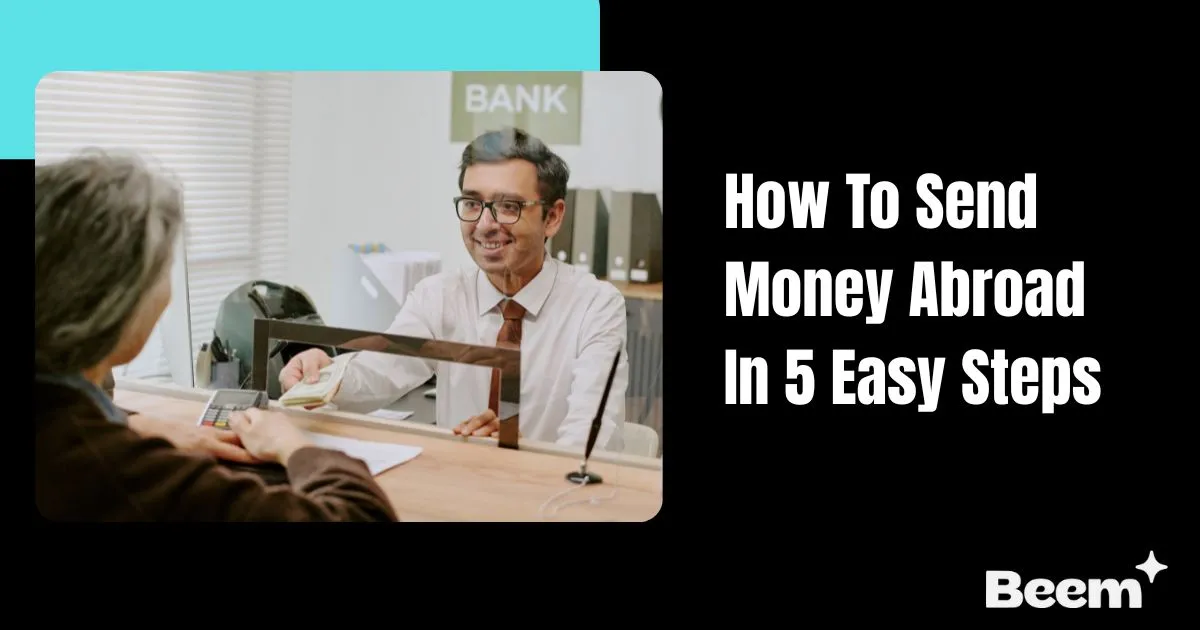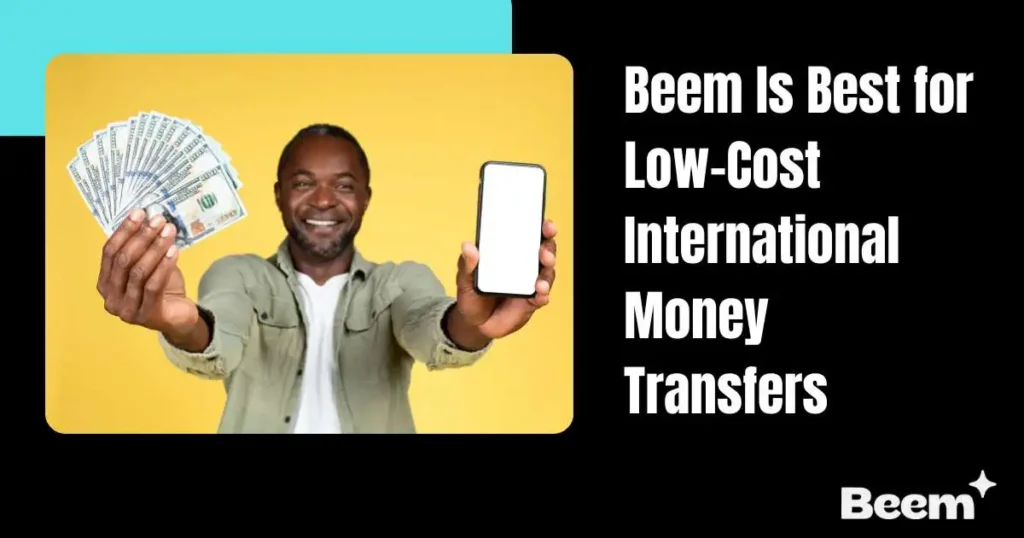At A Glance
Sending money across the world from the United States is more common than ever today, whether you’re supporting family, paying for international services, or managing global business. Yet, for many, the process can seem daunting and expensive. The good news: You can send money abroad in 5 easy steps.
Technology and competition have made international money transfers faster, more transparent, and more affordable than ever. In this comprehensive guide, we’ll break down how to send money abroad in 5 easy steps, help you save, avoid pitfalls, and ensure your funds reach safely.
Why US Residents Send Money Abroad
Millions of Americans need to transfer money overseas each year. Common reasons for this include:
- Supporting family or friends in other countries
- Paying for overseas education or tuition
- Settling invoices for international business or freelancers
- Making property purchases or investments abroad
- Donating to international causes
Whatever your reason, the right approach can save you time and money.
Step 1: Choose the Right Money Transfer Service
The first and arguably most important step is selecting the right provider. Your choice will impact cost, speed, convenience, and the ease with which your recipient can access the funds.
Traditional Banks
Banks offer international wire transfers, which are secure and reliable. However, they usually come with higher fees and less favorable exchange rates. For example, central US banks like Bank of America, Chase, and Wells Fargo may charge $35–$50 for outgoing international wires, plus additional exchange rate markups. Transfers can take 1–5 business days to complete, and you’ll need detailed recipient bank information, including SWIFT/BIC codes and sometimes the recipient bank’s address.
Also Read: Pros and Cons of Different International Money Transfer Services
Specialized Money Transfer Services
Companies like Wise, OFX, Western Union, MoneyGram, and Xoom have transformed the market. They often offer:
- Lower fees and better exchange rates than banks
- Multiple payout options (bank deposit, cash pickup, mobile wallet)
- Faster delivery times, sometimes within minutes
- User-friendly apps and websites
Key Providers at a Glance
| PROVIDER | BEST FOR | FEES & RATES | SPEED | PAYOUT OPTIONS |
| Wise | Transparent pricing | Small fixed + % fee, no markup | 1–3 days | Bank deposit |
| OFX | Large transfers | No transfer fee, markup 1.35–4.5% | 1–3 days | Bank deposit |
| Western Union | Cash pickup, global reach | Varies, often higher for cash | Minutes–days | Cash, bank, wallet |
| MoneyGram | Cash pickup, speed | Varies, 3% markup | Minutes–days | Cash, bank, wallet |
| Xoom (PayPal) | Fast, flexible funding | Low upfront, 1–3% markup | Minutes–days | Bank, cash, wallet |
Step 2: Register and Verify Your Account
Once you’ve chosen your provider, you’ll need to create an account. This process is designed to keep your money secure and comply with regulations.
How to Register
- Visit the provider’s website or download their app.
- Enter your details including name, address and contact information.
- Set a strong password and enable two-factor authentication for added security.
Verification Requirements
Most providers will ask for:
- Government-issued ID (driver’s license or passport)
- Social Security Number (SSN) or Tax ID
- Sometimes, proof of address (utility bill, bank statement)
Depending on the provider and your documentation, this step may take a few minutes to a day.
Security Tip: Always use a secure internet connection and never share your login details.
Step 3: Enter the Recipient’s Details
Accuracy is crucial at this stage. Errors can lead to delays or lost funds.
What You’ll Need
- Full Name: As it appears on the recipient’s bank account or ID
- Contact Information: Email or phone number
- Bank Details: Account number, bank name, SWIFT/BIC code, IBAN (for Europe), or local equivalent
- Cash Pickup: If using services like Western Union, specify the recipient’s city and preferred pickup location
Double-Check Everything
A single typo can cause your transfer to be delayed or even returned. Confirm all details with your recipient before sending.
Tip: If you’re sending to a new country, research local banking formats or ask your provider for guidance.
Step 4: Select the Amount and Payment Method
Now it’s time to decide how much to send and how you’ll pay.
Choosing the Amount
- Consider the recipient’s needs, your budget, and any transfer limits.
- Remember to account for fees and exchange rates. If these are deducted, your recipient will receive less than the amount you send.
Payment Methods
- Bank Transfer: Usually the cheapest, but can be slow.
- Debit/Credit Card: Faster, but often comes with higher fees.
- Cash: Available at agent locations for some services.
Understanding Fees and Exchange Rates
- Upfront Fees: Listed by most providers.
- Exchange Rate Markup: The hidden cost. Banks and some services add a margin to the real exchange rate. Wise, for example, uses the mid-market rate with no markup, making it more transparent.
- Total Cost: Always compare the final amount your recipient will get, not just the upfront fee.
Tip: Use online calculators from providers like Wise or OFX to see precisely how much your recipient will receive.
Step 5: Confirm, Send, and Track Your Transfer
Before you hit “send,” review all details once more. Most providers will show you a summary of the transaction.
Final Confirmation
- Double-check recipient details, amount, and fees.
- Authorize the transaction (may require a PIN, OTP, or biometric confirmation).
Tracking Your Transfer
- You’ll receive a confirmation email or SMS with a tracking/reference number.
- Most services offer real-time tracking via their website or app.
- For cash pickups, share the reference number with your recipient-they’ll need it to collect the funds.
If You Need Help
If the transfer is delayed, contact customer support using your reference number. You can request a trace using the SWIFT or Federal Reference number for bank wires.
Here’s a Different Way to Send Money Abroad at No Charge: Gift Cards
When most people think about sending money abroad, they immediately picture wire transfers, remittance apps, or specialized money transfer services. However, a creative and often overlooked alternative can be both cost-effective and convenient: sending money via gift cards.
This method is gaining traction, especially among those looking to avoid traditional transfer fees and provide recipients instant spending power. Let’s explore how this works, its advantages, and what you should consider before choosing this route.
Also Read: How Gift Cards Are Shaping the Future of Sending Money Internationally

How Sending Money via Gift Cards Works
Gift cards, especially international or prepaid cards, function like digital cash. The sender purchases a physical or digital card preloaded with a set amount. Depending on the card type and local options, the recipient can then use the card to shop online, pay bills, or even convert it to cash.
Step-by-Step Process
- Choose the Right Gift Card: Select a widely accepted international gift card, such as Visa, Mastercard, or American Express prepaid cards. Store-specific cards like Amazon or Google Play are also popular, but their use is limited to certain retailers or platforms.
- Purchase and Load: Buy the card online or at a retail store, loading it with the desired amount. Many platforms allow you to send digital codes instantly via email, making the process fast and borderless.
- Send to Recipient: Email the digital code or mail the physical card to your recipient. For instant delivery, e-gift cards are the best choice.
- Recipient Uses the Card: The recipient can use the card for online purchases, in-store shopping, or even to pay bills. Some cards, like Visa or Mastercard prepaid cards, are accepted at millions of locations worldwide.
- Convert to Cash option: In some cases, recipients can transfer the gift card balance to digital wallets like PayPal or sell the card on gift card marketplaces to receive cash in their local currency.
Why Choose Gift Cards for Sending Money?
There are many advantages to using gift cards to send money.
- No Transfer Fees: Unlike most international money transfer services, sending a gift card typically involves no transfer fee for the sender or the recipient. While some prepaid cards may have a small activation fee, many store or brand gift cards are free to purchase.
- Speed and Convenience: Digital gift cards can be delivered instantly via email or text, making them ideal for urgent situations or last-minute gifts. The recipient does not need a bank account or visit a money transfer agent.
- Flexibility for the Recipient: International gift cards from major networks (Visa, Mastercard, American Express) can be used almost anywhere, whether for online shopping, groceries, or travel. Store-specific cards, like Amazon or Netflix, allow the recipient to spend on what they need or enjoy most.
- No Bank Account Required: Gift cards are handy for recipients who don’t have access to traditional banking services, a common scenario in many countries.
Best Types of Gift Cards for International Transfers
- Visa and Mastercard Prepaid Cards: Accepted globally, can be used online or in-store, and sometimes even allow ATM withdrawals (check card terms for restrictions).
- Amazon Gift Cards: Perfect for recipients who shop on Amazon, with some cards usable across multiple country-specific Amazon sites.
- Google Play, iTunes, Netflix, and Other Digital Service Cards: Great for gifting entertainment, apps, or digital content, especially for younger recipients or those who prefer digital goods.
- Store-Specific Cards: Useful if you know the recipient’s favorite store or service, but check for country restrictions before purchasing.
How to Send Gift Cards Internationally
- Research the Best Card for the Recipient’s Country: Use guides on top international gift cards or check with major brands for global usability.
- Buy Online for Instant Delivery: Platforms like Amazon, Visa, Mastercard, and various fintech apps offer instant e-gift card delivery.
- Send Securely: Email the code directly to your recipient, or use a messaging app for added convenience.
- Guide the Recipient: Share instructions on redeeming or using the card, and warn them about potential scams.
Also Read: How to Send Money Securely Across Borders
Conclusion
Residents of the US can send money abroad in 5 easy steps. You can ensure your money reaches the receiver quickly and safely by choosing the right provider, registering securely, entering accurate details, selecting the best payment method, and tracking your transfer.
Remember, the key to saving money and avoiding stress is to compare options, understand real costs, and stay vigilant about security. Whether sending a one-time gift or making regular remittances, the right approach will help you make the most of every dollar.
Apps like Beem offer a modern solution for sending money abroad with its Send Now, Pay Later™ feature, giving users flexibility and speed when supporting loved ones across borders. Download the Beem app here.






